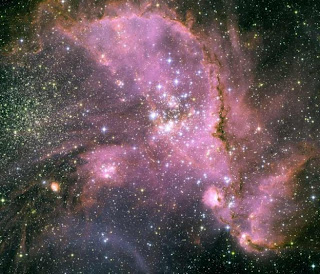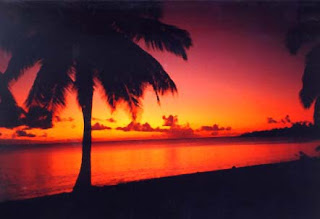 Michael posted the abstract to my thesis a while ago, but for a while now I've been meaning to make a few posts that clarify what I did for all those of you who don't have an advanced degree in astronomy. The goal of my thesis work was to try to come up with a better understanding of what the regions around young stars look like. This is interesting to astronomers, because lately we've been finding more and more planets around stars other than our own. We would like to understand what the conditions for planetary formation are, and one really good way of doing that is to look at very young stars, that should be in the process of making planets.
Michael posted the abstract to my thesis a while ago, but for a while now I've been meaning to make a few posts that clarify what I did for all those of you who don't have an advanced degree in astronomy. The goal of my thesis work was to try to come up with a better understanding of what the regions around young stars look like. This is interesting to astronomers, because lately we've been finding more and more planets around stars other than our own. We would like to understand what the conditions for planetary formation are, and one really good way of doing that is to look at very young stars, that should be in the process of making planets.The young stars that I was studying are actually between 3-8 million years old. This doesn't seem very young to humans, but in astronomical timescales it is a blink of an eye. Our own sun is 4.5 billion years old, and these young stars are only 0.1% as old as that. If we were to scale the age of the sun so that the sun was 100 years old, then the stars that I studied would only be a couple of months old - they are really "baby stars".
 I was looking for several different effects when observing these stars, and the first one that I'm going to write about today is a "reddening" effect. This effect is very familiar to anyone who has seen a red sunset. The reason that sunsets are red is because red light has an easier time penetrating dust and gas and water vapour than blue light does. The blue light tends to bounce off the tiny particles in the air and never ends up reaching us. Sunsets can be particularly red when there are extra particles or smoke in the air: large volcanic eruptions are notorious for causing red sunsets all over the world; the recent California wildfires had the same effect.
I was looking for several different effects when observing these stars, and the first one that I'm going to write about today is a "reddening" effect. This effect is very familiar to anyone who has seen a red sunset. The reason that sunsets are red is because red light has an easier time penetrating dust and gas and water vapour than blue light does. The blue light tends to bounce off the tiny particles in the air and never ends up reaching us. Sunsets can be particularly red when there are extra particles or smoke in the air: large volcanic eruptions are notorious for causing red sunsets all over the world; the recent California wildfires had the same effect.When we observe distant stars, we can see them becoming more red as clumps of dust and gas pass between us and the star. This dust and gas will eventually start to clump together to form planets, comets, and asteroids, but in young stars all of this material takes the form of a disk or rings, much like the dusty rings that surround the planet Saturn. Usually, as the star gets redder, it also gets more faint, which is an additional indication that the star is being obscured by dust in its immediate surroundings.
Next time: How an additional property of light, its polarization, can help us to determine the shape of dusty structures around the star.
3 comments:
I am enjoying your blog with your daily entries. I have just been told how I can comment. Would love to see the windows full of chocolate, but even more to go through the door and buy. Glad you are simplifying your thesis so that I can absorb the information. Good luck on your house hunting.
I recently linked to your website via your Dad's and I have to say that I find it pretty interesting (I wonder the same thing when I watch reality TV). Congrats and good luck as you pursue your Ph.D. (I am a simple master's student :) ). I hope you plan on posting your discoveries as you continue your research.
Jane, you have a gift for explaining your work in terms an english major can understand! I am so proud of you, and I look forward to learning more.
Post a Comment